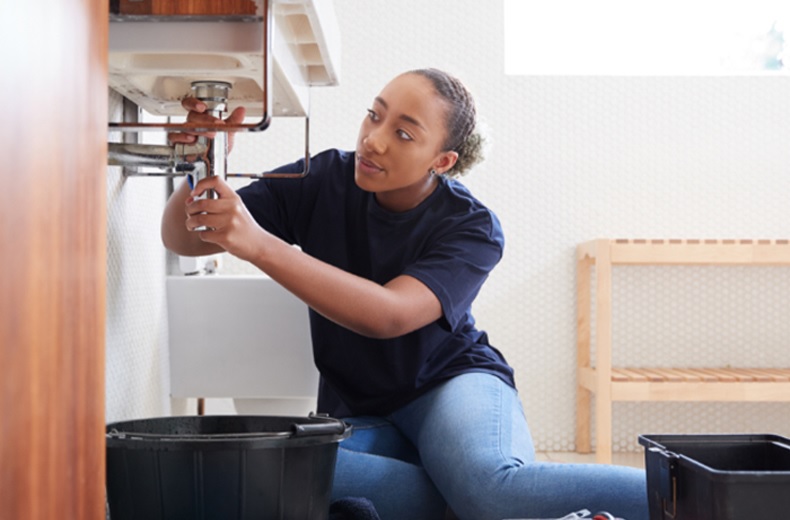Affordable Plumbing Services Alabaster AL for Every Budget
Affordable Plumbing Services Alabaster AL for Every Budget
Blog Article
A Detailed Overview to Effective Water Heater Installation for Optimum Efficiency
Starting the task of installing a hot water heater is an endeavor that demands precision and a systematic strategy for accomplishing ideal performance. The process starts with the essential choice of choosing the appropriate heating system customized to the particular needs of your house, thinking about elements such as size, power, and type source. Once selected, preparing the installation location to fulfill security criteria is vital. However, the trip doesn't finish below. As you proceed, the details of connecting water supply lines and establishing trustworthy electrical or gas links wait for, appealing understandings into making certain effectiveness and integrity.
Picking the Right Hot Water Heater

Following, take into consideration the size and capacity of the hot water heater. It's crucial to analyze your household's hot water requirements, which can differ based upon the variety of owners and their use patterns. An unit that's too small might bring about not enough hot water, while an oversized model might result in unnecessary energy consumption.
Effectiveness scores likewise play a crucial duty in option. Look for water heating units with high Power Aspect (EF) rankings, showing superior performance and decreased energy usage. Tankless designs, though commonly more expensive upfront, offer substantial energy cost savings gradually because of their on-demand home heating capacities.
Preparing the Setup Location
Before setting up a new water heating system, careful preparation of the installation location is necessary. It's important to determine the space carefully to suit the water heating unit's measurements, making sure adequate clearance around the system for effective procedure and servicing.
Following, get rid of any kind of debris, dust, or obstructions from the site to produce a tidy setting. Inspect the flooring for security, as the water heating system will certainly need a solid, level surface to operate efficiently. If essential, install a drip frying pan below the device to catch possible leakages or spills, protecting against water damages to the surrounding location. In areas susceptible to seismic activity, consider setting up seismic bands to secure the heating unit securely in position.
Additionally, guarantee that all required tools and products get on hand before commencing the installation. This consists of things such as wrenches, screwdrivers, a degree, and any extra hardware needed for protecting the heater and mounting. A well-prepared installment area establishes the structure for an effective water heater setup, maximizing performance and safety.
Connecting Water Supply Lines
When attaching water supply lines to your freshly set up water heater, it is crucial to make certain that all links are leak-free and safe and secure to preserve efficient procedure and prevent water damages. Begin by identifying the cool and hot water supply lines. The chilly water inlet is generally noted with a blue tag or a "C", while the warm water outlet is noted with a red label or an "H".
Usage flexible water heating unit adapters to facilitate a less complicated setup procedure. Before connecting the adapters, place a plumber's tape around the threaded ends of the water heating unit's inlet and electrical outlet pipes.
When links are in place, gradually activate the primary water valve. Examine each connection for leakages by aesthetically really feeling and checking for more information moisture. Tighten links as necessary, and guarantee the pressure relief valve is appropriately installed, protecting versus too much pressure accumulation.
Establishing Electric or Gas Links
Effectively establishing up the electrical or gas links for your water heater is a crucial action to ensure secure and efficient operation. For electric water heating systems, begin by validating that the electrical circuit is suitable with the heating unit's voltage and amperage needs.
For gas hot water heater, safety is extremely important. Verify that the gas supply is off prior to proceeding. Attach the gas line to the water heating unit using a versatile gas adapter, ensuring it is effectively threaded and sealed with pipeline joint compound or Teflon tape appropriate for gas connections. Tighten up the links with a wrench, making sure not to over-tighten (Water Heater installation Alabaster AL).
As soon as connections are made, check for any kind of prospective leaks. For gas lines, apply a soapy water option to the joints; bubbles indicate a leak. For electric connections, confirm that all electrical wiring is protected and effectively shielded, maintaining compliance with regional electrical codes.
Checking and Readjusting for Effectiveness
With the electrical and gas links securely in location, the following action is assessing the functional effectiveness of your water heater. Begin by very carefully transforming on the water supply and making certain there are no leakages at any of the shutoffs or joints.
Following, execute a detailed inspection to ensure the burner or burner are operating appropriately. For electrical heating units, utilize a multimeter to verify if the components are drawing the appropriate current. In gas versions, observe the heater flame; it ought to be steady and blue, indicating reliable burning.
Change the settings as necessary to eliminate inadequacies. Take into consideration executing insulation steps, such as adding a water heating unit blanket, to even more enhance performance by decreasing warm loss. Additionally, inspect the anode pole's problem, as a worn-out pole can lower performance and result in container corrosion.
Verdict
Reliable water heating system installation is essential for guaranteeing ideal efficiency and power cost savings. Safely linking water supply lines and meticulously establishing up electric or gas links decrease potential concerns.

Properly setting up the electrical or gas connections for your water heating unit is a crucial step to guarantee risk-free and reliable procedure. For electrical water heating systems, start by validating that the electric circuit is suitable with the heater's voltage and amperage needs. Connect the gas line to the water heater using a flexible gas connector, guaranteeing it is effectively threaded and secured with pipeline joint substance or Teflon find here tape ideal for gas links.
Report this page